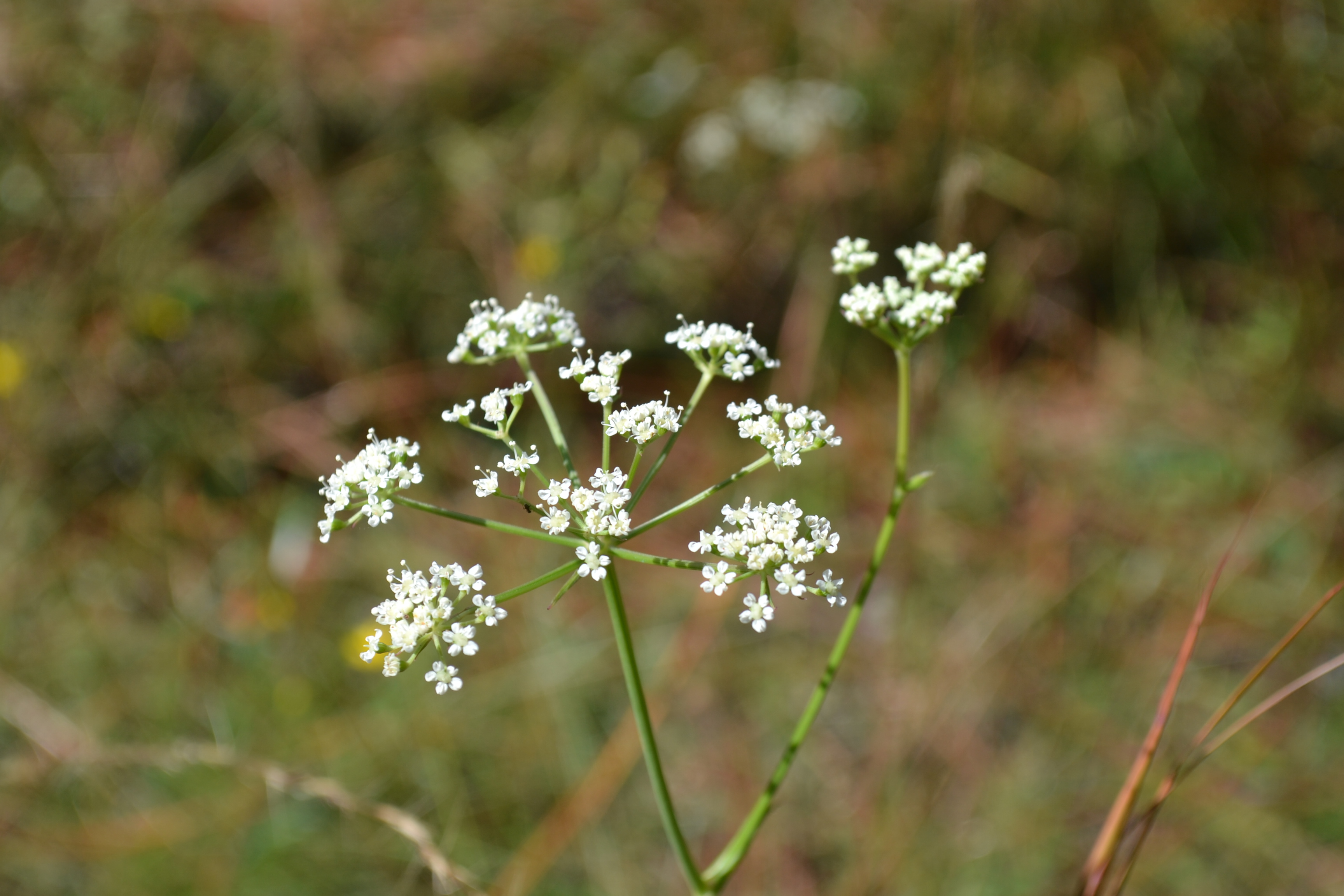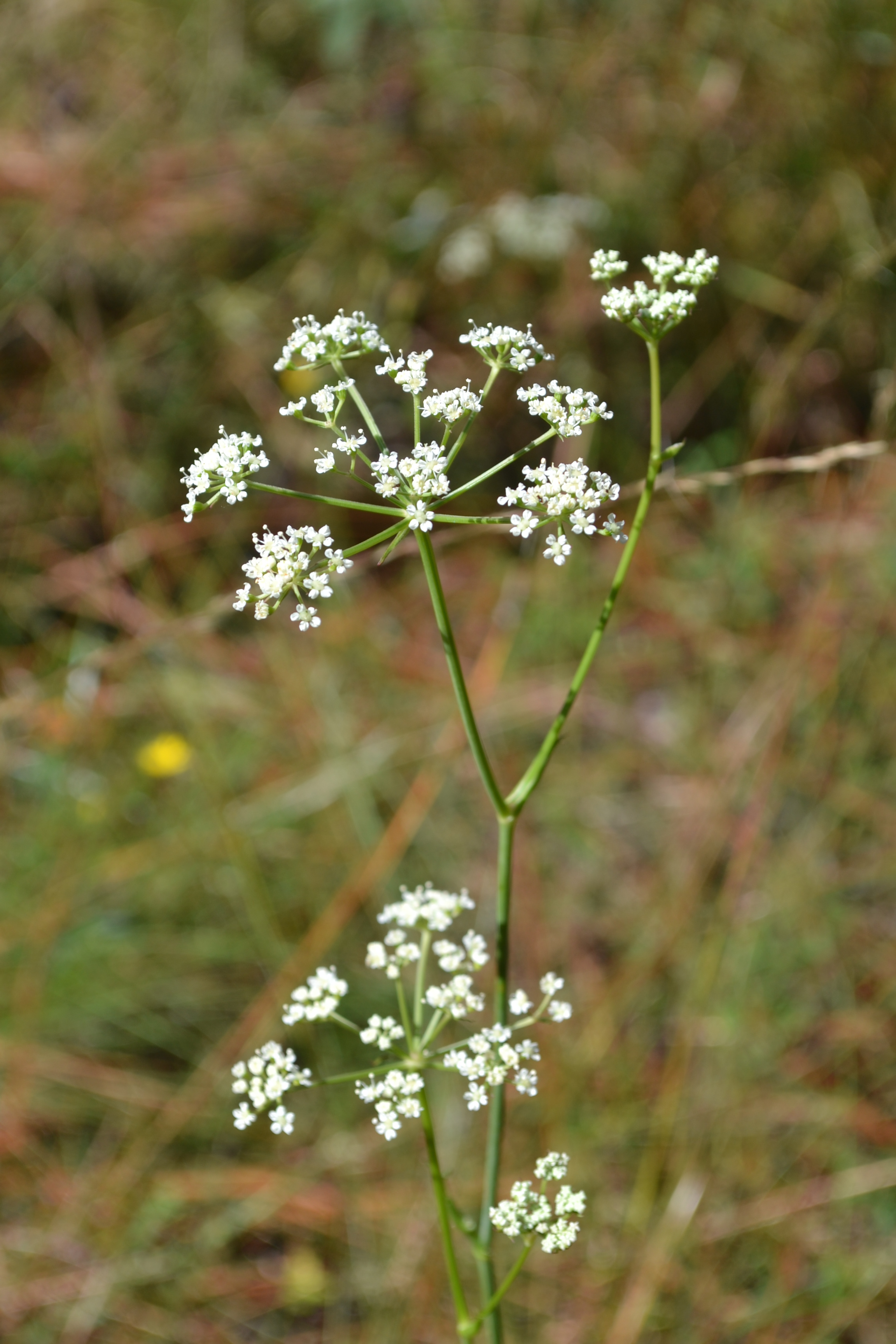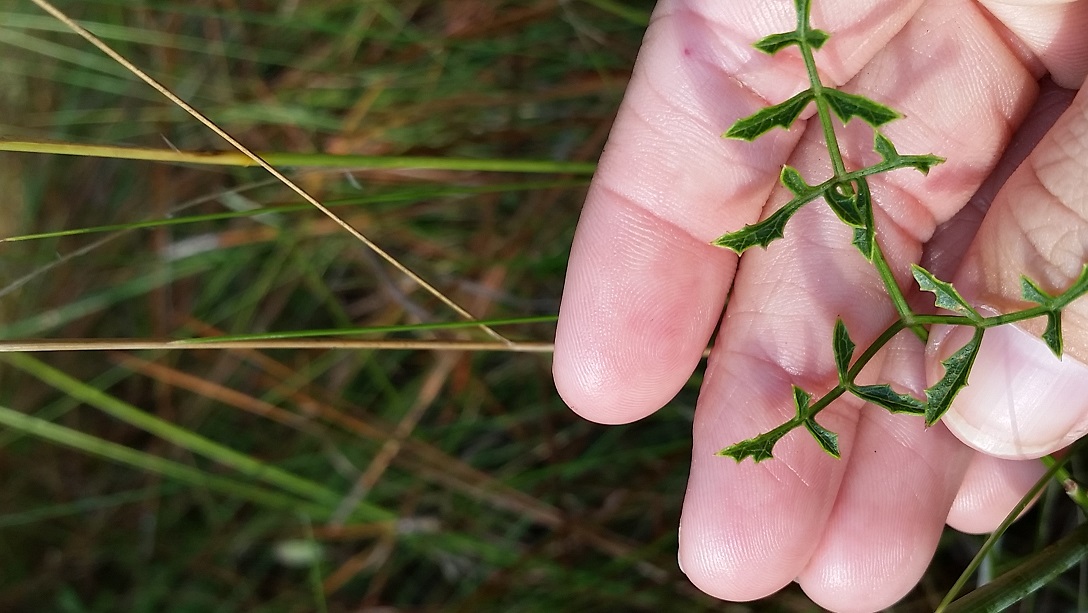Difference between revisions of "Angelica dentata"
KatieMccoy (talk | contribs) (→Distribution) |
KatieMccoy (talk | contribs) |
||
| Line 27: | Line 27: | ||
==Ecology== | ==Ecology== | ||
===Habitat===<!--Natural communities, human disturbed habitats, topography, hydrology, soils, light, fire regime requirements for removal of competition, etc.--> | ===Habitat===<!--Natural communities, human disturbed habitats, topography, hydrology, soils, light, fire regime requirements for removal of competition, etc.--> | ||
| − | ''A. dentata'' is restricted to native groundcover | + | ''A. dentata'' is restricted to native groundcover and is commonly associated with upland pinelands of South Georgia<ref name="ostertag">Ostertag, T.E., and K.M. Robertson. 2007. A comparison of native versus old-field vegetation in upland pinelands managed with frequent fire, South Georgia, USA. Pages 109–120 in R.E. Masters and K.E.M. Galley (eds.). Proceedings of the 23rd Tall Timbers Fire Ecology Conference: Fire in Grassland and Shrubland Ecosystems.</ref>. Habitats include sandhills, longleaf pine-wiregrass savannas, longleaf-scrub oaks, boggy areas, and pine flatwoods. It occurs in disturbed areas such as roadsides and logged fields. Thrives in areas that are open or semi-shaded. Soils include dry sand, gravelly soil, loamy sand and dry and moist loamy soil<ref name="fsu">Florida State University Robert K. Godfrey Herbarium database. URL: http://herbarium.bio.fsu.edu. Last accessed: June 2014. Collectors: L. C. Anderson, W. Baker, B. Boothe, M. Boothe, A. F. Clewell, V. Craig, M. A. Garland, R. K. Godfrey, R. Kral, E. Keppner, L. Keppner, R. Komarek, T. MacClendon, K. MacClendon, R. A. Pursell, H. Roth, and R. White. States and Counties: Florida: Bay, Calhoun, Franklin, Gadsden, Jackson, Leon, Liberty, and Wakulla. Georgia: Decatur, Grady, and Thomas.</ref><ref name="weakley">Weakley, Alan S. Flora of the Southern and Mid-Atlantic States: Working Draft of 21 May 2015. University of North Carolina Herbarium (NCU). PDF. 1227.</ref>.Associated species include ''Croton, Pinus palustris, Quercus laevis, Q. margaretta, Rhynchosia, Symphyotrichum dumosum, Carphephorus odoratissiumus, C. paniculatus, Chrysopsis spp.'', and ''Symphiotrichum dumosum''<ref name="fsu"/>. |
===Phenology===<!--Timing off flowering, fruiting, seed dispersal, and environmental triggers. Cite PanFlora website if appropriate: http://www.gilnelson.com/PanFlora/ --> | ===Phenology===<!--Timing off flowering, fruiting, seed dispersal, and environmental triggers. Cite PanFlora website if appropriate: http://www.gilnelson.com/PanFlora/ --> | ||
Revision as of 14:12, 29 March 2016
| Angelica dentata | |
|---|---|

| |
| Photo taken by Kevin Robertson | |
| Scientific classification | |
| Kingdom: | Plantae |
| Division: | Magnoliophyta - Flowering plants |
| Class: | Magnoliopsida – Dicotyledons |
| Order: | Apiales |
| Family: | Apiaceae ⁄ Umbelliferae |
| Genus: | Angelica |
| Species: | A. dentata |
| Binomial name | |
| Angelica dentata (Chapm.) J.M. Coult. & Rose | |

| |
| Natural range of Angelica dentata from USDA NRCS Plants Database. | |
Common names: Coastal Plain Angelica, Sandhill Angelica
Contents
Taxonomic notes
Description
Distribution
It is found in southwest and south-central Georgia and in the eastern part of the panhandle of Florida[1].
Ecology
Habitat
A. dentata is restricted to native groundcover and is commonly associated with upland pinelands of South Georgia[2]. Habitats include sandhills, longleaf pine-wiregrass savannas, longleaf-scrub oaks, boggy areas, and pine flatwoods. It occurs in disturbed areas such as roadsides and logged fields. Thrives in areas that are open or semi-shaded. Soils include dry sand, gravelly soil, loamy sand and dry and moist loamy soil[3][1].Associated species include Croton, Pinus palustris, Quercus laevis, Q. margaretta, Rhynchosia, Symphyotrichum dumosum, Carphephorus odoratissiumus, C. paniculatus, Chrysopsis spp., and Symphiotrichum dumosum[3].
Phenology
Flowers June through December[3].
Fire ecology
It can be found in frequently burned areas such as longleaf pine savannas[3].
Conservation and Management
Cultivation and restoration
Photo Gallery
References and notes
Florida State University Robert K. Godfrey Herbarium database. URL: http://herbarium.bio.fsu.edu. Last accessed: June 2014. Collectors: L. C. Anderson, W. Baker, B. Boothe, M. Boothe, A. F. Clewell, V. Craig, M. A. Garland, R. K. Godfrey, R. Kral, E. Keppner, L. Keppner, R. Komarek, T. MacClendon, K. MacClendon, R. A. Pursell, H. Roth, and R. White. States and Counties: Florida: Bay, Calhoun, Franklin, Gadsden, Jackson, Leon, Liberty, and Wakulla. Georgia: Decatur, Grady, and Thomas.
Ostertag, T.E., and K.M. Robertson. 2007. A comparison of native versus old-field vegetation in upland pinelands managed with frequent fire, South Georgia, USA. Pages 109–120 in R.E. Masters and K.E.M. Galley (eds.). Proceedings of the 23rd Tall Timbers Fire Ecology Conference: Fire in Grassland and Shrubland Ecosystems.
Weakley, Alan S. Flora of the Southern and Mid-Atlantic States: Working Draft of 21 May 2015. University of North Carolina Herbarium (NCU). PDF. 1227.
- ↑ 1.0 1.1 Weakley, Alan S. Flora of the Southern and Mid-Atlantic States: Working Draft of 21 May 2015. University of North Carolina Herbarium (NCU). PDF. 1227.
- ↑ Ostertag, T.E., and K.M. Robertson. 2007. A comparison of native versus old-field vegetation in upland pinelands managed with frequent fire, South Georgia, USA. Pages 109–120 in R.E. Masters and K.E.M. Galley (eds.). Proceedings of the 23rd Tall Timbers Fire Ecology Conference: Fire in Grassland and Shrubland Ecosystems.
- ↑ 3.0 3.1 3.2 3.3 Florida State University Robert K. Godfrey Herbarium database. URL: http://herbarium.bio.fsu.edu. Last accessed: June 2014. Collectors: L. C. Anderson, W. Baker, B. Boothe, M. Boothe, A. F. Clewell, V. Craig, M. A. Garland, R. K. Godfrey, R. Kral, E. Keppner, L. Keppner, R. Komarek, T. MacClendon, K. MacClendon, R. A. Pursell, H. Roth, and R. White. States and Counties: Florida: Bay, Calhoun, Franklin, Gadsden, Jackson, Leon, Liberty, and Wakulla. Georgia: Decatur, Grady, and Thomas.

